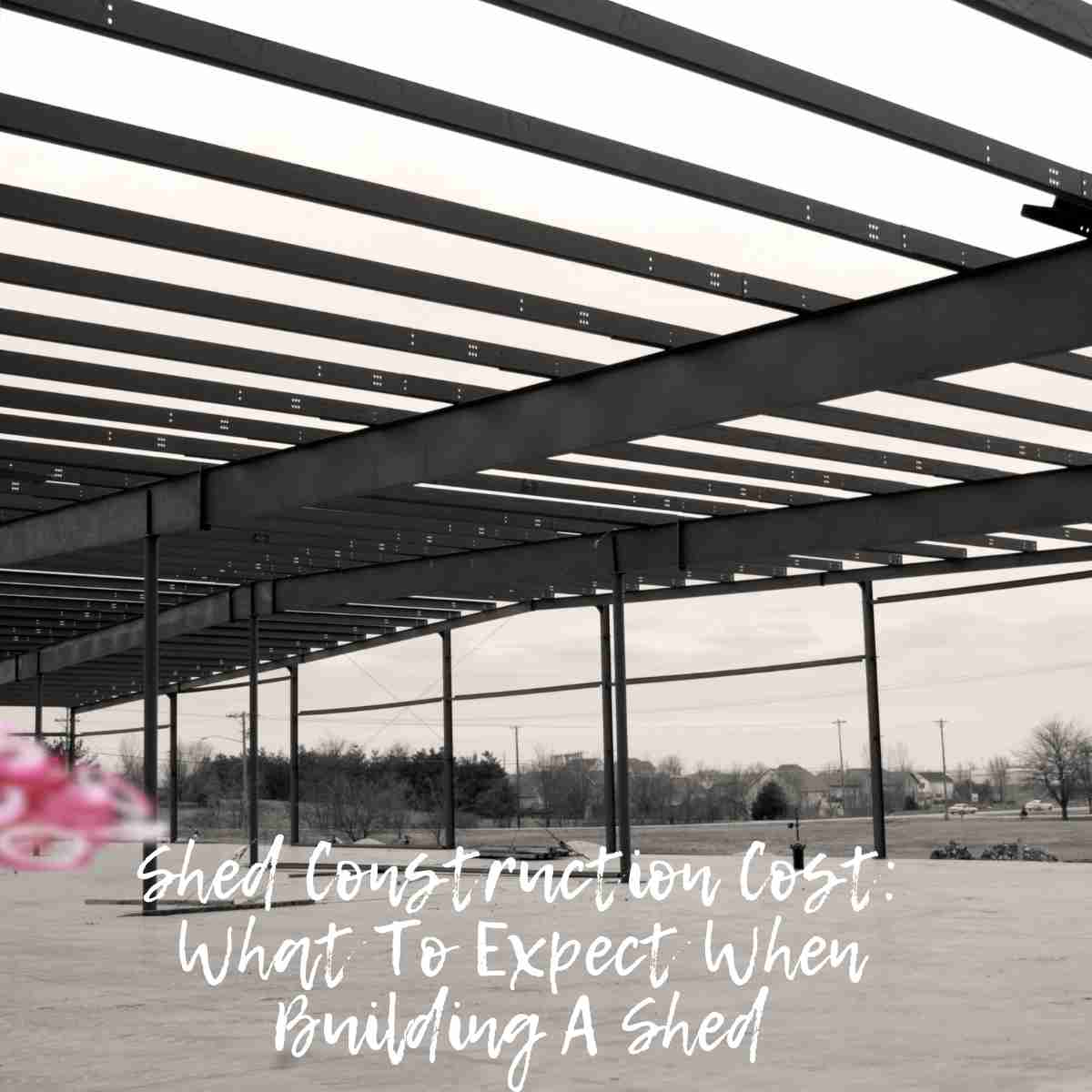A well-placed shed can be a game-changer, offering much-needed storage space, a dedicated workshop area, or even a backyard getaway. But before you dive headfirst into the shed-building process, it's crucial to solidify your budget. After all, building a shed isn't a one-size-fits-all situation, and the final shed cost can vary significantly depending on several factors.
This article will shed light on the different aspects that influence shed construction costs, giving you a clearer picture of what to expect when budgeting for your project.

Factors That Impact Cost
Several factors can significantly affect the cost throughout the shed building process, including:
Size And Design
The dimensions and complexity of the shed's design are major cost determinants. Larger sheds require more materials and potentially more sophisticated construction techniques, which can increase the price.
Additionally, custom designs with unique features or non-standard shapes can be more costly compared to standard, straightforward designs.
Materials
The choice of building materials has a substantial impact on both the cost and the durability of the shed. Common materials include wood, metal, vinyl, or plastic.
Each material has different price points and longevity, with wood typically being more expensive and requiring maintenance, metal being durable but potentially more costly, and plastic being the most affordable and low-maintenance option.
Foundation
The type of foundation required depends on the shed’s size and the local ground conditions. Options range from simple gravel bases to more expensive concrete slabs. A solid and appropriate foundation is crucial for the stability and longevity of the shed, which can add to the construction costs.
Labor Costs
Whether you choose to build the shed yourself or hire professionals will significantly affect the overall cost. DIY projects eliminate labor costs but require time and tools you may need to purchase or rent. Professional construction ensures quality and efficiency but at a higher price.
Permits And Regulations
Depending on local laws, building a shed might require permits, especially if it exceeds certain sizes or includes specific features like electricity or plumbing. The cost of obtaining these permits and ensuring that the shed complies with local codes can vary.
Custom Features
Adding features such as electricity, plumbing, windows, insulation, or custom doors can greatly increase the cost. Each additional feature adds complexity and requires more materials and labor.
Accessibility
The location where the shed is to be built can also affect the average cost. If materials and workers have easy access to the site, costs may be lower. However, if the shed is located in a remote or hard-to-reach area, transporting materials and labor can become more expensive.
Ongoing Maintenance
The long-term costs associated with maintaining the shed should also be considered. Different materials require different levels of maintenance. For example, wood may need regular treatment to prevent decay and pest infestation, while metal might need rust protection.
Understanding these factors can help in effectively planning and budgeting for a shed construction project.
Stretching Your Dollars For A Dream Shed
Building a shed doesn't have to break the bank. With some clever planning and strategic choices, you can get the storage space (or workshop, art studio, you name it!) you need without blowing your budget. Here are some tips to maximize your shed construction project's affordability:
Right-size Your Shed
Don't get carried away with square footage. Carefully assess your storage needs and stick to a size that fulfills them efficiently. Every extra square foot adds to the material and construction costs.
Think Vertically
Utilize wall space with shelves, hooks, and cabinets. This maximizes storage capacity without increasing the shed's footprint.
Consider Recycled Materials
Explore reclaimed wood or salvaged metal for a unique and budget-friendly option. Just ensure they're structurally sound.
Compare Material Lifespans
While cheaper upfront, materials like thin plywood might require replacement sooner. Opt for materials with a longer lifespan to avoid future costs.
Gravel For Smaller Sheds
For lightweight storage sheds, a well-compacted gravel pad can be a cost-effective foundation option.
DIY The Foundation
If you're comfortable with basic construction, consider laying the gravel pad or concrete slab yourself. Just ensure you follow proper techniques for stability.
Invest In Quality Materials
While cheaper materials might seem tempting upfront, they could require more frequent maintenance or replacements, leading to higher costs in the long run.
Explore Permit Alternatives
In some cases, smaller sheds might fall under exemptions that eliminate the need for permits. Check with your local building department.
Skip The Fancy Features
While skylights and cupolas add a touch of luxury, they also add to the cost. Stick to a basic functional design and consider adding these features later if your budget allows.
Repurpose What You Have
Look around for existing materials you can incorporate into the shed. Old windows, doors, or even leftover lumber can add character and save money.
Choose An Accessible Location
Building close to an existing driveway minimizes delivery costs for materials and avoids the need for special equipment to reach a remote location.
By following these tips and carefully planning your project, you can build a fantastic shed that fits your needs and your budget. Remember, a little creativity and resourcefulness can go a long way in achieving your backyard shed dream!
Takeaway
Building a shed is an exciting project that can add value and functionality to your property. By carefully considering these factors, you can create a realistic budget for your shed construction project and avoid any surprise costs down the road. With a well-defined budget and a clear vision, your backyard shed dream can soon become a beautiful (and affordable) reality.
